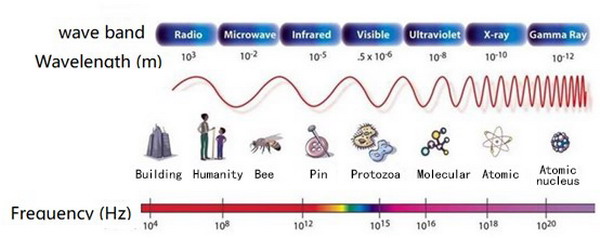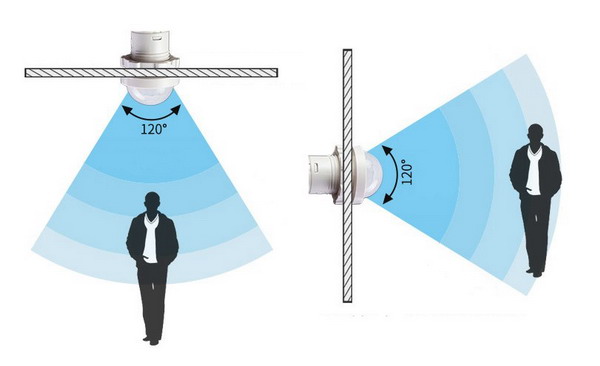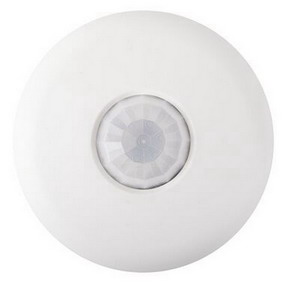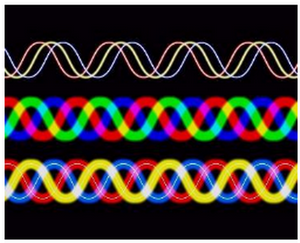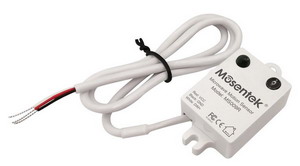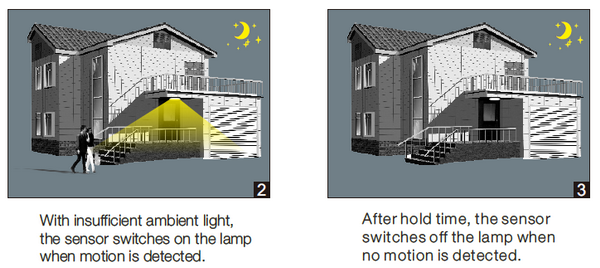At present, there are two kinds of sensors used in lamps: infrared sensor and microwave sensor.
Electromagnetic spectrum
Both infrared ray and microwave belong to electromagnetic waves. The electromagnetic spectrum of electromagnetic wave ranged in the order of wavelength or frequency and energy is shown in the figure as below:
Infrared sensor
●Infrared ray
Infrared ray (IR) is an electromagnetic wave with a frequency between microwave and visible light. It is the general name of the radiation with a frequency of 0.3THz ~ 400THz in the electromagnetic spectrum and a wavelength of 1mm ~ 750nm in vacuum. It is invisible light with a lower frequency than red light.
Infrared ray can be divided into three parts: Near infrared ray(high frequency infrared ray, high energy), and wavelength (3 ~ 2.5) μ m~(1~0.75) μ M; Medium infrared ray(medium frequency infrared ray, moderate energy), wavelength (40 ~ 25) μ m~(3~2.5) μ M; Far infrared ray (low frequency infrared ray, low energy), wavelength 1500 μ m~(40~25) μ M. Infrared ray (especially Far infrared ray) has a strong thermal effect. It can resonate with most inorganic molecules and organic macromolecules in organisms, accelerate the motion of these molecules and rub each other, so as to generate heat. Therefore, infrared ray can be used for heating and molecular spectroscopy. Far infrared ray is also called "Terahertz ray" or "terahertz light" in scientific research.
Infrared ray has thermal effect and can resonate with most molecules to convert light energy (energy of electromagnetic wave) into intramolecular energy (heat). The heat of the sun is mainly transmitted to the earth through infrared ray.
In physics, substances above absolute zero (0k, be. - 273.15 ℃) can produce infrared ray(and other types of electromagnetic waves). Modern physics calls it blackbody radiation (thermal radiation).
Infrared ray cannot pass through any opaque object. Whether it emits infrared rays has nothing to do with whether there is life. Objects with different infrared wavelengths emit different temperatures. The reasons are as follows: the generation of infrared rays is
caused by the vibration of molecules on the surface of objects. Different objects have different natural vibration frequencies, so the infrared wavelengths are different.
●Application of infrared sensor in lamp
The infrared sensor on the lamp is composed of infrared ray detection circuit, infrared ray signal processing circuit, signal output control switch circuit and power supply circuit.
Infrared sensor is an automatic control product based on infrared technology. When the human body enters the sensing range, the special sensor detects the change of the infrared spectrum of the human body and will automatically turn on the load.
In general, the infrared sensor source of lighting products usually adopts pyroelectric component. When the infrared radiation temperature of the human body changes, this component will lose the charge balance and release the charge outward. After the subsequent circuit is detected and processed, it can trigger the switch action. The human body has a constant body temperature, generally at 37 degrees, so it will emit infrared rays with a specific wavelength of about 10um. The passive infrared probe works by detecting the infrared rays emitted by the human body. About 10um infrared ray emitted by the human body is concentrated on the infrared sensing source after being enhanced by the Fresnel lens.
Infrared sensor switch is specially designed for human body, which is friendly, convenient, safe and energy-saving, and shows humanized care. However, the detection range is smaller than that of microwave sensor. At the same time, the height is limited, and the action reaction speed is slower than that of microwave sensor.
Microwave sensor
●Microwave
Microwave refers to the electromagnetic wave with the frequency of 300MHz-300GHz. It is the abbreviation of a limited frequency band in radio wave, that is, the electromagnetic wave with the wavelength between 1m (excluding 1m) and 1mm. It is the general term of decimeter wave, centimeter wave, millimeter wave and submillimeter wave, which belongs to invisible light. The microwave frequency is higher than the general radio wave frequency, which is usually called "UHF electromagnetic wave". As an electromagnetic wave, microwave also has wave particle duality.
Wave-particle duality means that it has both wave characteristics and particle characteristics. It can travel forward like a wave and show the characteristics of particles. Therefore, we call it "wave particle duality".
The basic properties of microwave usually show three characteristics: penetration, reflection and absorption. For glass, plastic and porcelain, microwaves almost pass through without being absorbed. For water and food, it will absorb microwaves and make itself hot. For metal things, they will reflect microwaves.
The microwave penetration rate of glass, plastic, wood and porcelain can be understood as the same. The theory of 2450MHz Microwave penetration is about 6cm. 915MHz is 8cm. The penetration time is negligible.
●Application of microwave sensor in lamp
The microwave sensor uses the Doppler principle to transmit and receive high-frequency microwave signals (accurately perceive the movement change of objects), and controls the turning on and off of load lamps through signal amplification and intelligent identification of single-chip microcomputer program.
Microwave energy is usually obtained by DC or 50Hz AC through a special device. There are many kinds of devices that can produce microwave, but they are mainly divided into two categories: semiconductor devices and electric vacuum devices.
The microwave sensor controller uses a micro-ring antenna with a certain diameter for microwave detection. The antenna generates an elliptical radius (adjustable) spatial microwave alert area in the axis direction. When the human body moves, the echo reflected by it interferes with the original microwave field (or frequency) sent by the microwave sensor controller and changes. The infrared sensor lamp is paired with an infrared transmitting diode and a receiving diode. After detection, amplification, shaping, multiple comparison and delay processing, the white wire outputs the voltage control signal.
Due to the characteristics of microwave, it has great propagation loss in the air and short transmission distance, but has good mobility and large working bandwidth. In addition to the millimeter wave technology applied to 5G mobile communication, microwave transmission is mostly in metal waveguide and dielectric waveguide. Microwave sensor can detect dynamic objects and has a wide application environment.
At present, in addition to some necessary rules as: safety regulations, EMC, environmental protection standards, etc., there are no compulsory reference standards for sensor functions, especially the sensing distance and reflection time, which refer to the general standards of the industry, or judged whether they meet the requirements according to the standards agreed between the customer and the manufacturer and the user experience.
All lighting products of Wellway can be customized according to the requirements of customers. The mature products include LED weather-proof lamp with sensor, LED dust-proof lamp with sensor, LED ceiling lamp with sensor and so on. At present, the microwave sensor mode is adopted in all most products. Wellyway has a special laboratory for testing the sensitivity and distance of microwave sensors to ensure the reliability and stability of product quality. We sincerely welcome customers to visit, advice our factory and cooperate with us.
(Some pictures come from the Internet. If there is infringement, please contact and delete it immediately)
Post time: Sep-22-2022
